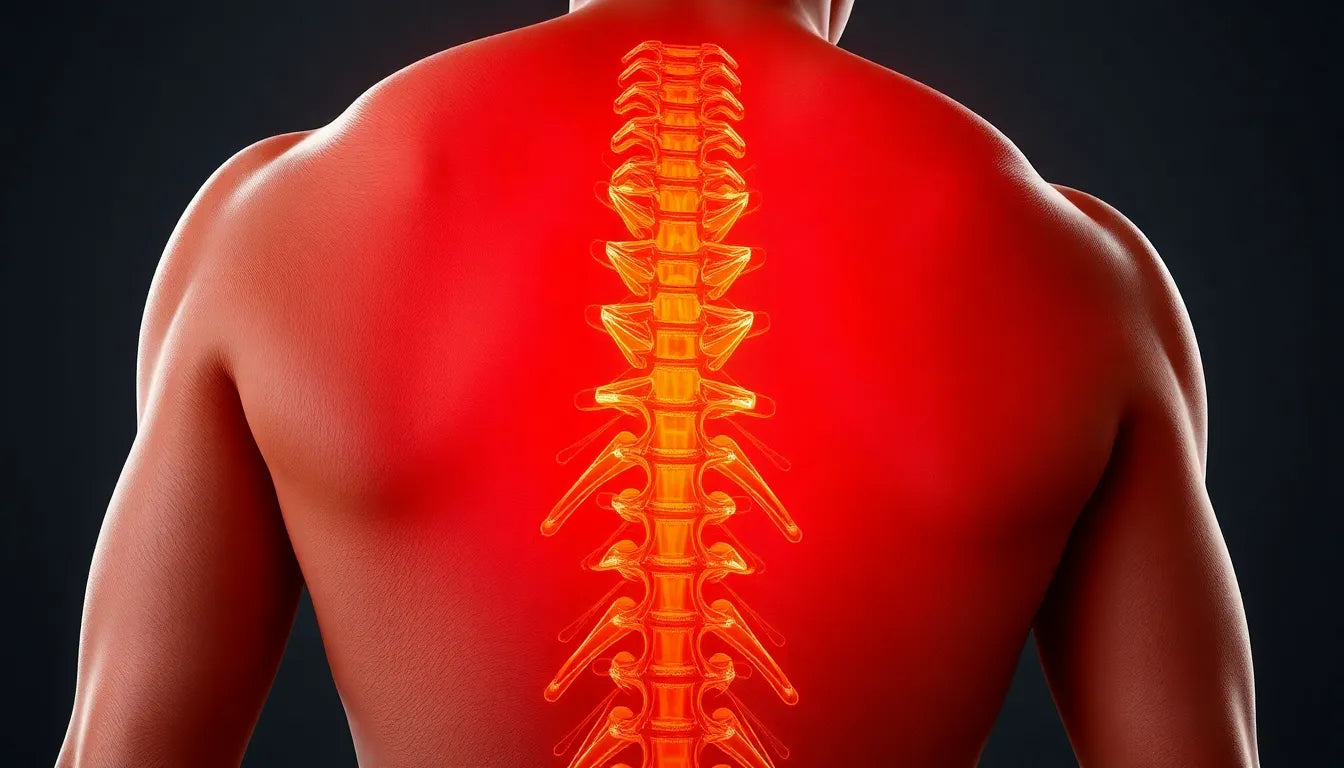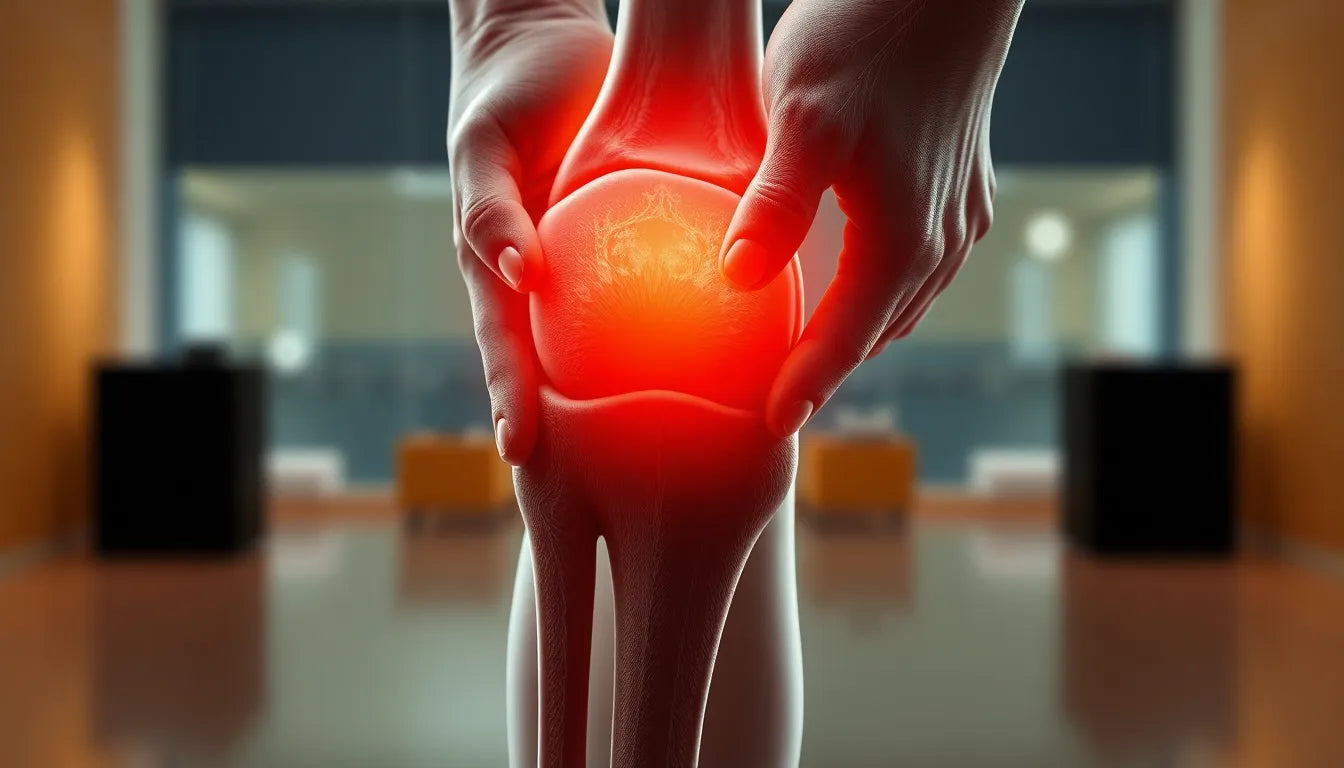Neck strain is a common issue that many people experience at some point in their lives. This condition is characterized by pain and discomfort in the neck area, often resulting from poor posture, sudden movements, or prolonged strain. In today's digital age, where many individuals spend long hours hunched over computers or mobile devices, neck strain has become increasingly prevalent. It can significantly impact daily life, affecting productivity and overall well-being.
Understanding the root causes of neck strain is crucial for addressing and preventing it. Poor posture, such as slouching or leaning forward for extended periods, places undue stress on the neck muscles. Sudden movements, like jerking the neck quickly, can also lead to strain. Additionally, activities that involve holding the neck in an awkward position for a long time, such as reading in bed or cradling a phone between the ear and shoulder, contribute to the problem.

Men's Posture Shirt™ - Black
Patented shirt helps improve posture and relieve neck, shoulder, and back pain.
Immediate steps for relief
When neck strain occurs, taking immediate action is essential to alleviate pain and prevent further complications. The first step in managing neck strain is self-care. This involves a stepwise approach that includes rest, ice or heat therapy, and gentle movement. These initial measures can provide quick relief and help prevent the condition from becoming chronic.
Resting the neck is crucial to allow the muscles to recover. Avoid activities that exacerbate the pain and try to maintain a comfortable position. Applying ice to the affected area can help reduce inflammation and numb the pain, especially in the first 48 hours after the onset. After a day or two, transitioning to heat therapy can promote blood flow and relax tight muscles.
Gentle movement is also important to maintain the neck's range of motion and prevent stiffness. However, it's vital to avoid sudden or intense movements that could worsen the condition. By following these initial steps, individuals can achieve quick relief from neck strain and set the stage for a full recovery.
Immediate self-care strategies for neck strain
Addressing neck strain promptly is crucial to alleviating discomfort and preventing further complications. The first line of defense involves immediate self-care strategies that focus on resting and modifying activities. It is important to pause any activities that could exacerbate the pain, allowing the neck muscles to recover without additional strain. Maintaining a comfortable position, such as lying down with a supportive pillow, can help reduce tension and promote healing.
Cold and heat therapy for effective relief
Cold and heat therapy are foundational steps in managing neck strain effectively. Applying ice to the affected area within the first 48 hours can significantly reduce inflammation and numb the pain. For optimal results, ice should be applied in 10 to 20-minute sessions, allowing breaks in between to prevent skin damage. As the initial inflammation subsides, transitioning to heat therapy can be beneficial. Heat helps increase blood flow, promoting muscle relaxation and further alleviating discomfort. Alternating between ice and heat can provide ongoing relief and expedite recovery.
Pain management with over-the-counter medications
For many individuals, over-the-counter medications offer an effective way to manage neck strain pain. Nonsteroidal anti-inflammatory drugs (NSAIDs) such as ibuprofen and naproxen are commonly recommended for reducing pain and inflammation. Alternatively, acetaminophen can be used to alleviate pain, though it does not address inflammation. It is important to follow dosage guidelines carefully and be aware of potential side effects, such as gastrointestinal discomfort with NSAIDs. Consulting with a healthcare professional is advisable if there are any concerns about medication interactions or underlying health conditions.
Gentle stretching and movement
Maintaining the neck's range of motion is essential for recovery and preventing stiffness. Gentle stretching and movement can aid in this process, but it is crucial to proceed with caution. Simple neck stretches, such as tilting the head from side to side or gently rotating the neck, can help maintain flexibility. However, it is important to avoid sudden or intense movements that could exacerbate the strain. Engaging in these stretches regularly, but gently, can support the healing process and prevent further injury.
Supportive measures for neck strain relief
In addition to immediate self-care strategies, incorporating supportive measures can enhance recovery and provide comfort. Gentle massage can be particularly effective in relieving tension and increasing circulation in the neck muscles. Whether performed by a professional or using self-massage techniques, this approach can complement other treatments and promote relaxation.
Using supportive devices, such as neck collars or ergonomic pillows, can also provide relief. These devices help maintain proper alignment and reduce strain on the neck during rest or activities. Additionally, creating an ergonomic workspace is crucial for preventing future occurrences of neck strain. Ensuring that computer screens are at eye level, chairs provide adequate support, and workstations are set up to promote good posture can significantly reduce the risk of strain.

Women's Posture Shirt™ - Black
Patented shirt provides posture support and may relieve pain and tension in neck and back.
By implementing these in-depth strategies for neck strain relief, individuals can effectively manage their condition and minimize discomfort. These measures not only provide immediate relief but also contribute to long-term prevention, allowing for a healthier and more comfortable lifestyle.
Professional and advanced treatments for neck strain
While initial self-care strategies can provide significant relief from neck strain, there are times when professional and advanced treatments become necessary. Recognizing when to seek professional help is crucial for effective management and recovery. Persistent pain, limited range of motion, or symptoms that do not improve after a few days may indicate the need for a medical evaluation.
When to seek professional help
If neck strain symptoms persist or worsen, consulting with a physician or physical therapist is advisable. These professionals can assess the condition and recommend appropriate interventions. Physical therapy often includes exercises designed to improve strength and flexibility, which can be highly effective in alleviating neck strain and preventing future occurrences.
Alternative therapies for neck strain
Alternative therapies such as acupuncture and chiropractic care can also offer benefits for individuals with neck strain. Acupuncture may help reduce pain and promote relaxation, while chiropractic adjustments can improve alignment and mobility. It is important to choose qualified professionals for these treatments to ensure safety and effectiveness.
Advanced medical interventions
In severe cases of neck strain, advanced medical interventions may be necessary. Prescription medications, such as muscle relaxants, can be used to manage severe pain and spasms. In some instances, steroid injections may be recommended to reduce inflammation. Surgery is typically reserved for chronic issues or cases involving nerve impingement, and it is not considered a first-line treatment.
Prevention and long-term management of neck strain
Preventing neck strain and managing it in the long term requires a proactive approach. Good ergonomics and posture play a vital role in reducing the risk of neck strain. Ensuring that workstations are set up correctly, with computer screens at eye level and chairs that provide adequate support, can significantly decrease the likelihood of developing neck strain.
Lifestyle adjustments for neck health
Incorporating regular breaks and exercises into daily routines is essential for maintaining neck health. Taking short breaks to stretch and move around can prevent strain from prolonged activities. Staying active and maintaining overall health through regular exercise and a balanced diet also contribute to a healthy neck and reduce the risk of strain.
Frequently Asked Questions
What should I do if my neck strain doesn't improve within a few days?
If your neck strain does not improve within a few days, it is advisable to seek medical advice. A healthcare professional can evaluate your condition and recommend appropriate treatments, which may include physical therapy, prescription medications, or further diagnostic tests.
Are there any exercises I should avoid with neck strain?
When dealing with neck strain, it is important to avoid exercises that involve sudden or intense movements, such as high-impact sports or heavy weightlifting. Instead, focus on gentle stretching and low-impact activities that maintain flexibility without exacerbating the strain.
How can I set up my workspace to prevent neck strain?
To prevent neck strain, set up your workspace ergonomically. Ensure that your computer screen is at eye level, your chair supports your lower back, and your feet rest flat on the floor. Use a headset for phone calls to avoid cradling the phone between your ear and shoulder.
Can neck strain lead to more serious conditions?
While neck strain is typically a temporary condition, if left unaddressed, it can lead to more serious issues such as chronic pain or nerve damage. Early intervention and proper management are crucial to prevent complications and ensure a full recovery.
By following these comprehensive steps and tips, individuals can find effective relief from neck strain and learn valuable strategies for prevention. Prioritizing neck health through proper care and preventive measures can lead to a more comfortable and pain-free lifestyle.
Kilder
- UCHealth. (n.d.). "Neck Strain."
- Mayo Clinic Staff. (n.d.). "Neck Pain: Diagnosis & Treatment." Mayo Clinic.
- Physiopedia Contributors. (n.d.). "Neck Pain: Clinical Practice Guidelines." Physiopedia.
- Blanpied, P. R., et al. (2017). "Neck Pain: Revision 2017." Journal of Orthopaedic & Sports Physical Therapy.
- New York State Workers' Compensation Board. (2014). "Neck Injury Medical Treatment Guidelines."
- Childs, J. D., et al. (2020). "Neck Pain: Clinical Practice Guidelines Linked to the International Classification of Functioning, Disability, and Health from the Orthopaedic Section of the American Physical Therapy Association." American Family Physician.
- Cleveland Clinic. (n.d.). "Neck Pain: Symptoms, Causes, and Treatment." Cleveland Clinic.
- Borenstein, D. G., et al. (2018). "Neck Pain." StatPearls. StatPearls Publishing.


















